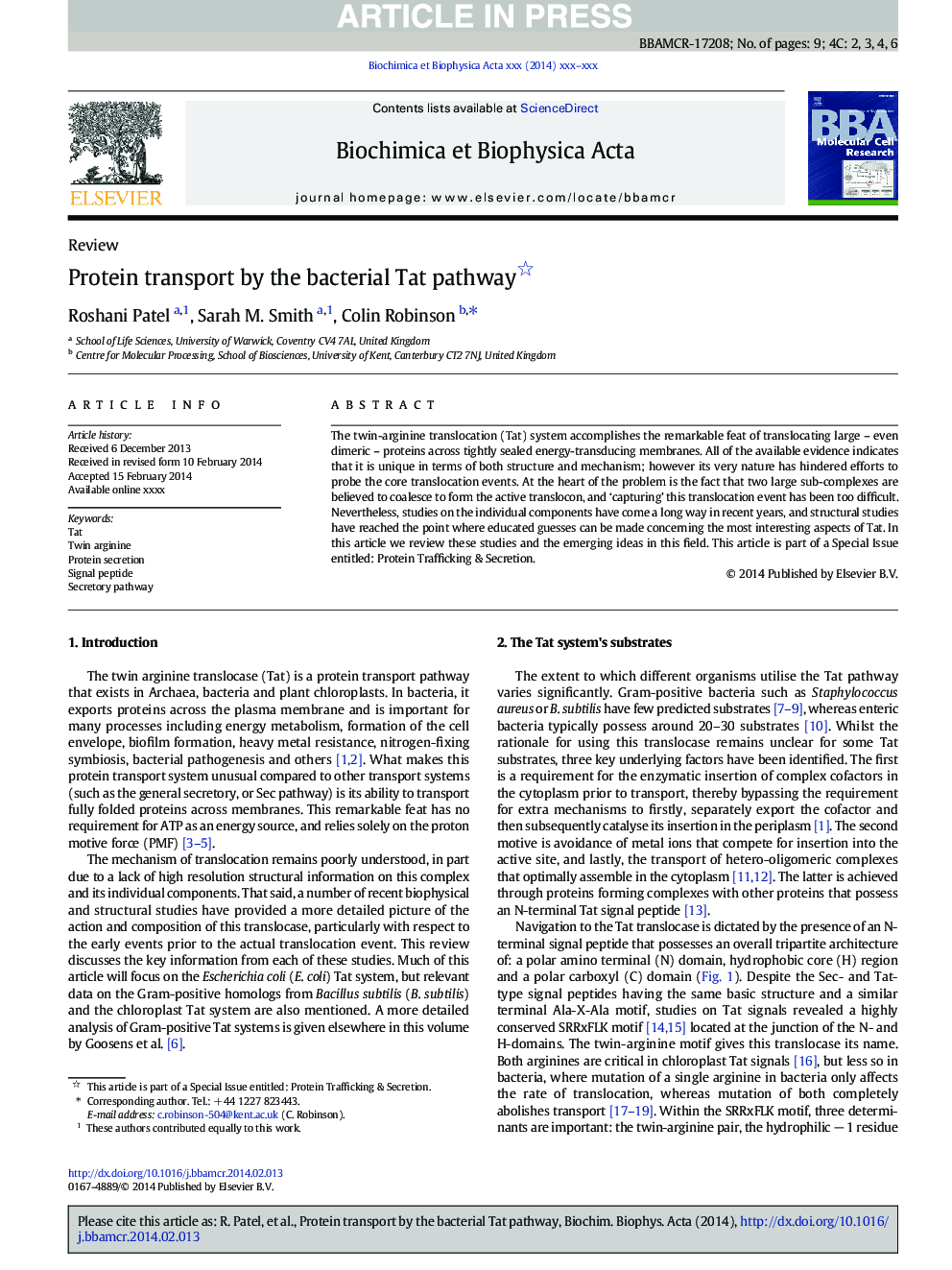| Article ID | Journal | Published Year | Pages | File Type |
|---|---|---|---|---|
| 10802140 | Biochimica et Biophysica Acta (BBA) - Molecular Cell Research | 2014 | 9 Pages |
Abstract
The twin-arginine translocation (Tat) system accomplishes the remarkable feat of translocating large - even dimeric - proteins across tightly sealed energy-transducing membranes. All of the available evidence indicates that it is unique in terms of both structure and mechanism; however its very nature has hindered efforts to probe the core translocation events. At the heart of the problem is the fact that two large sub-complexes are believed to coalesce to form the active translocon, and 'capturing' this translocation event has been too difficult. Nevertheless, studies on the individual components have come a long way in recent years, and structural studies have reached the point where educated guesses can be made concerning the most interesting aspects of Tat. In this article we review these studies and the emerging ideas in this field. This article is part of a Special Issue entitled: Protein trafficking and secretion in bacteria. Guest Editors: Anastassios Economou and Ross Dalbey.
Related Topics
Life Sciences
Biochemistry, Genetics and Molecular Biology
Biochemistry
Authors
Roshani Patel, Sarah M. Smith, Colin Robinson,
